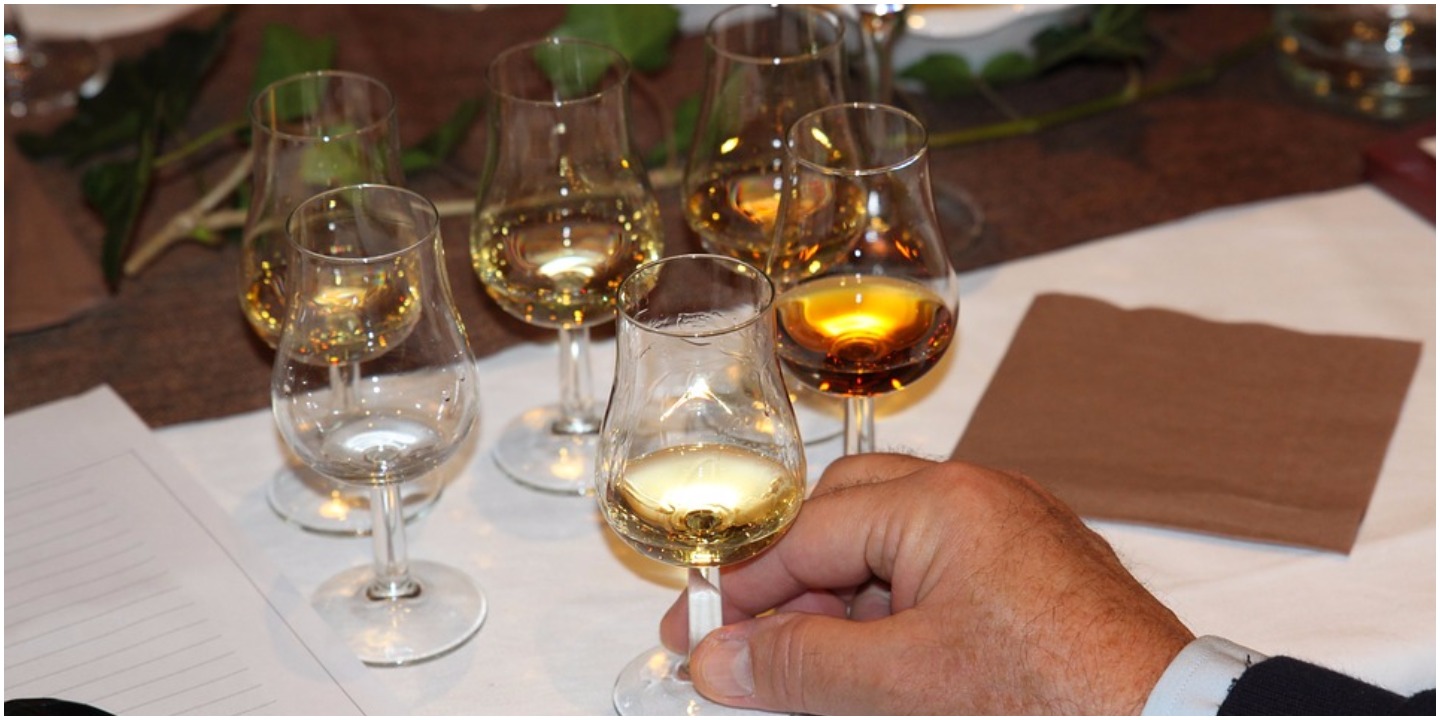Ask Whisky Foundation: Should I put water in my independent bottlings?
Uncategorized
Unless you’ve been living under a rock, you’ll probably have read the study that found that putting water in whisky definitively improves the flavour of it. (Well, in so far as taste is highly subjective and a matter of opinion.)
Did you miss it? Here’s a quick watered-down recap. (Get it, because it’s about putting water in whisky…)
Brace yourself, here comes some whisky science.
In a nutshell, the study looked at the effect of guaiacol in whisky and how this interacted with differing amounts of ethanol and water.
For those that don’t have a PhD in whisky, guaiacol – or, C6H4(OH)(OCH3) – is the molecule that gives whisky that smoky goodness. Unsurprisingly, guaiacol is found in higher quantities in whiskies from Islay. (That’s what gives them the huge fist of smoke and peaty flavour.)
Now, here’s what the study found.
When whisky is at 45% ABV or less, these guaiacol molecules sit close to the top of the liquid. That means, when you nose the whisky or take the initial sip, you’ll get hit with them straight away.
That’s why a Lagavulin is so distinctive – you’re assaulted by a horde of guaiacol racing towards your taste buds and overwhelming you with smoky, peaty flavours.
However, as the concentration of the whisky increases – say to cask strength levels of 55% ABV or 60% ABV – the molecules cling to the ethanol, which sits further away from the surface of the drink.
That means that you’re not going to get a huge hit of smokiness (although you will still notice it).
What does this mean for independent bottlings?
Before we get onto that, it’s important to note a few things about this study.
First of all, the study doesn’t prove that putting water in whisky makes it taste better. It simply proves that it disperses the smoky characteristics more evenly across the whisky.
However, whisky isn’t just about the initial sip. It’s a journey.
Sometimes it’s good to discover hints of smokiness after an initial hit of sweetness, or sometimes it’s good for the smokiness to fade and give way to something a little subtler. Spreading the smokiness across the whisky might come at the cost of losing some more subtle flavours.
Secondly – and this is a big concern – the study was performed on a computer. It wasn’t performed by whisky tasters or whisky experts. It wasn’t carried out by a distiller or a bottler. It was a simulation.
And, on top of that, it was a simulation that examined whisky in a box shaped vessel.
I don’t know about you, but I’ve never sipped my whisky out of a box.
(Although, never say never. Who knows what the next hipster trend will be. Whisky out of a shoe box? Whisky from a hollowed-out Rubik’s cube? It’s scary that these plucked-from-thin-air ideas will probably pop up in Shoreditch next week. We best send off the patent forms…)
The big question: does this make the blindest bit of difference?
Not in the slightest.
If you’re a fan of independent bottlings, you’ll have known for a while that water in whisky can bring out the character of a whisky or stave off the alcohol burn.
But you’ve probably also realised that some whiskies – even cask strength ones – often don’t need dilution at all.
After all, why would bottlers release something at cask strength if it tasted better diluted?
Cask strength whiskies are all about putting you in control. You drink them how they taste best to you. If you want to put water in whisky, do it. If you don’t, don’t.
That’s what we’ve always been about here at Whisky Foundation: people drinking whisky how they enjoy it.
So, while this study might be great for science or for shutting up the ‘oh-you-add-water-to-your-whisky-do-you?’ people, we can’t help but feel that it backs up the idea that there’s a right and a wrong way to drink your whisky.
And we don’t like that.
However you like your whisky – whether over ice, diluted with water or cask strength – we don’t care.
The fact you enjoy your whisky is enough for us.
Death to whisky snobbery.
Now, if you’ll excuse us, we’ve got a delivery of 10,000 Rubik’s Cubes to hollow out…



